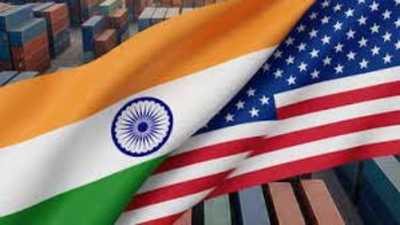ARTICLE AD BOX

Photo used for representational purpose only
The United States appears ready to fast‑track a bilateral trade deal with India, driven by the need to diversify supply chains away from China and secure access to critical inputs.
According to GTRI director Ajay Srivastava, tightening Chinese controls on rare‑earth exports and an intensifying US–China trade conflict have “forced Washington to rethink its strategy with allies as it seeks reliable partners to build alternative supply chains.” He added that this shift “could accelerate a trade deal with India, with the US likely offering 16–18% tariff access-higher than the 15% for the EU and Japan but below the 20% for Vietnam.”A swift agreement would help unwind recently imposed US tariffs-up to 50%-that have squeezed Indian exporters. “The deal may move quickly because Washington wants it, giving India relief from the 50% tariffs now hurting its exports,” Srivastava noted. Yet he urged caution: India should “hold firm on its red lines in agriculture, digital trade, e‑commerce, and intellectual property, and avoid any anti‑China clauses that could limit its strategic autonomy.
”Negotiators face familiar friction points. In agriculture, limited market access through tariff cuts and tariff‑rate quotas on select US products is conceivable, but India remains protective of small farmers and dairy, wary of subsidized US competition. On intellectual property, stricter patent standards risk undermining India’s generics industry and access to affordable medicines. In digital trade, the United States typically seeks binding commitments on cross‑border data flows, data localization, and treatment of digital products; India prefers flexible, best‑endeavor language to preserve domestic policy space.
E‑commerce rules and FDI in multi‑brand retail are additional sensitivities that touch competition, consumer protection, and the role of large platforms.Meanwhile, a delegation of senior Indian officials is set to travel to the United States this week to expedite trade discussions. The Indian delegation, comprising three senior officials, is scheduled to visit Washington from October 15-17. Commerce secretary Rajesh Agrawal is expected to participate in the discussions.
Last month, commerce and industry minister Piyush Goyal led a delegation to New York for preliminary trade talks.
Following those discussions, both India and the US agreed to expedite negotiations to reach a mutually beneficial trade agreement.Beyond tariff schedules, Washington is likely to press India for commercial purchases-energy (oil and LNG), aircraft, and potentially nuclear reactors-tying economic and strategic cooperation.
India, for its part, has indicated readiness to consider phased tariff reductions on industrial goods and address selected non‑tariff barriers, while maintaining safeguards in sensitive sectors.Currency markets are already reading the tea leaves. The rupee traded around Rs 88.25 after touching Rs 87.75 early Wednesday, versus ₹88.76 at Tuesday’s close. The sharp intraday swing suggests heavy dollar selling by the Reserve Bank of India to smooth volatility ahead of Diwali-a period of heightened inflation sensitivity.
Srivastava said the RBI “may also be positioning for a possible US–India trade deal, which could boost dollar inflows by reviving Indian exports to the US.
”The proposed trade agreement aims to more than double bilateral trade to $500 billion by 2030, up from the current $191 billion. The US remained India’s largest trading partner for the fourth straight year in 2024–25, with bilateral trade at $131.84 billion ($86.5 billion exports). The US accounts for roughly 18% of India’s goods exports, 6.22% of imports, and 10.73% of total merchandise trade—figures that underscore why both sides say they want to move quickly toward a deal.(With inputs from agencies)

 6 hours ago
5
6 hours ago
5









 English (US) ·
English (US) ·